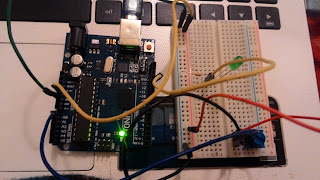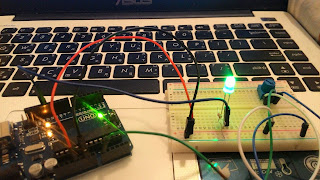Author: Christina He
Credit: New Innovators.com Lab 7
Time to Complete: Approximately 10 min
Difficulty Level: Level 1
Challenge Description: Make a program that the buzzer will sing "Ode To Joy".
Answer:
Code
int speakerPin = 9;
int length = 15;
char notes[] = "eefggfedccdeeddeefggfedccdedcc ";
int beats[] = { 1, 1, 1, 1, 1, 1, 1, 1, 1, 1, 1, 1, 2, 1, 1 , 1, 1, 1, 1, 1, 1, 1, 1, 1, 1, 1, 1, 2, 1 ,1 };
int tempo = 300;
void playTone(int tone, int duration)
{
for (long i = 0; i < duration * 1000L; i += tone * 2)
{
digitalWrite(speakerPin, HIGH);
delayMicroseconds(tone);
digitalWrite(speakerPin, LOW);
delayMicroseconds(tone);
}
}
void playNote(char note, int duration)
{
char names[] = { 'c', 'd', 'e', 'f', 'g', 'a', 'b', 'C' };
int tones[] = { 1915, 1700, 1519, 1432, 1275, 1136, 1014, 956 };
for (int i = 0; i < 8; i++)
{
if (names[i] == note)
{
playTone(tones[i], duration);
delay(2000);
}
}
}
void setup()
{
pinMode(speakerPin, OUTPUT);
}
void loop()
{
for (int i = 0; i < length; i++)
{
if (notes[i] == ' ')
{
delay(beats[i] * tempo);
}
else
{
playNote(notes[i], beats[i] * tempo);
}
delay(tempo / 2);
}
}
Visual Answer






























